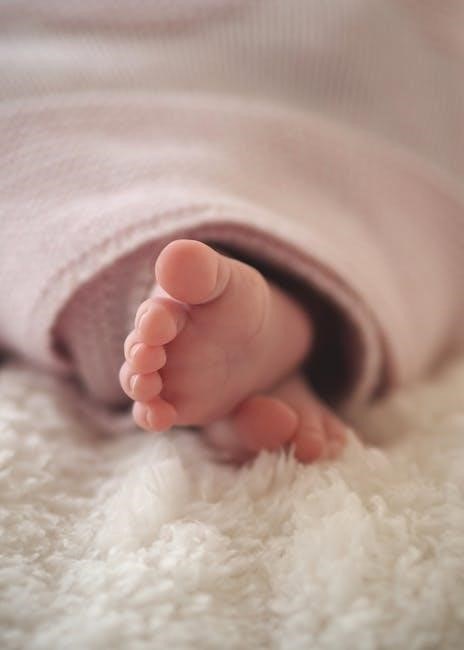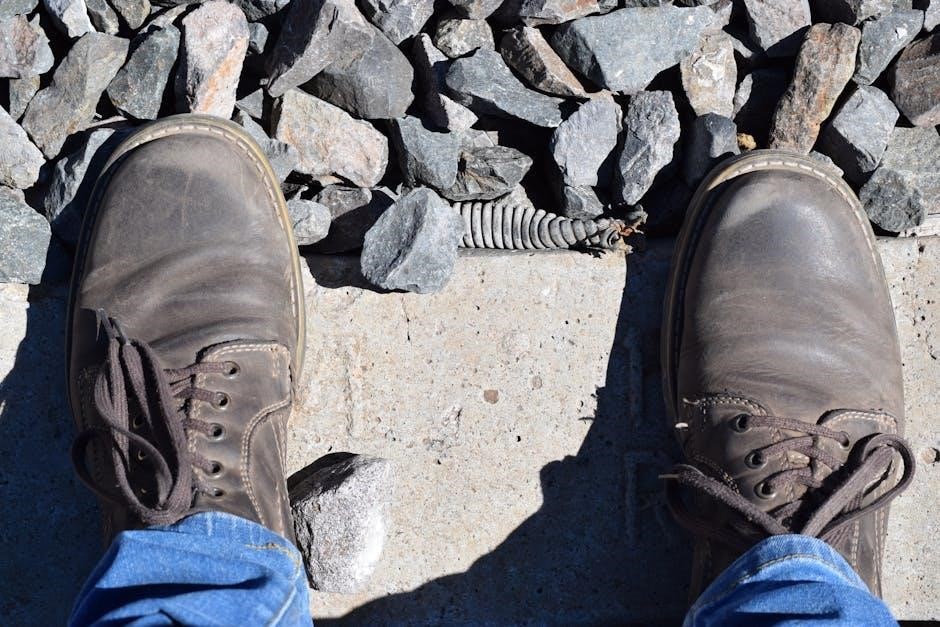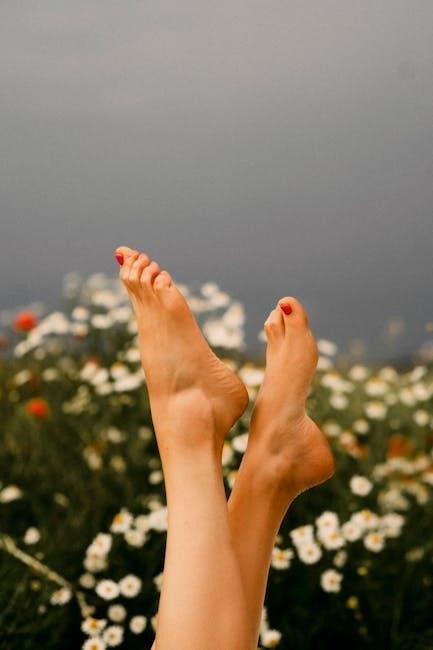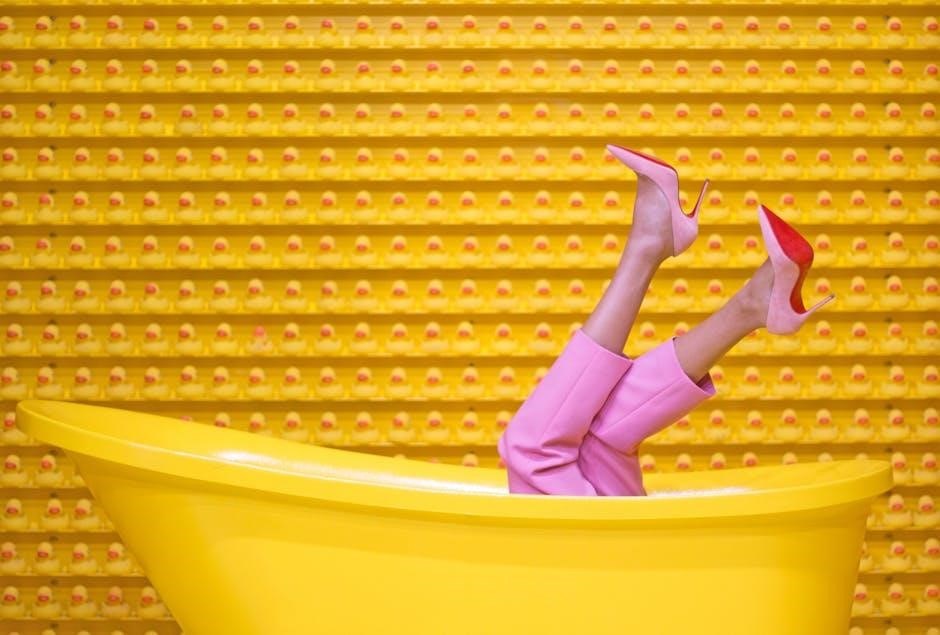Presser Foot Guide: An Overview
A presser foot is an essential sewing machine attachment that holds fabric flat for stitching. Different types exist, each designed for specific tasks, from basic seams to advanced techniques. Understanding their uses enhances sewing skills and ensures professional results. Explore the possibilities!

The Function of a Presser Foot
The primary function of a presser foot is to hold fabric securely against the feed dogs, ensuring even and consistent feeding during the sewing process. This prevents the fabric from lifting, shifting, or puckering as the needle penetrates it, leading to more accurate and professional-looking stitches. Without a presser foot, controlling the fabric and achieving uniform seams would be incredibly difficult.
The presser foot also plays a crucial role in maintaining consistent seam allowances and preventing the needle from bending or breaking, particularly when working with thicker or multiple layers of fabric. Spring-hinged designs provide flexibility, allowing the foot to adjust to varying fabric thicknesses. Different types of presser feet are designed for specific purposes, further enhancing their functionality.
Furthermore, some presser feet incorporate built-in guides that aid in creating precise hems, topstitching, or decorative stitching. Ultimately, the presser foot is indispensable for achieving quality and accuracy in sewing projects, regardless of skill level. Its correct application ensures fabric control, prevents errors, and contributes to the overall success of the finished product.

Types of Presser Feet and Their Uses
Various presser feet cater to specific sewing tasks. From all-purpose to specialized feet like zipper, buttonhole, hemming, and walking feet, each serves a unique function. Understanding their uses unlocks creative sewing possibilities and enhances project quality.
All-Purpose Foot
The all-purpose foot, a standard inclusion with every sewing machine, truly lives up to its name. It’s the jack-of-all-trades presser foot, designed for an array of sewing tasks. From straight stitches to zig-zag and satin stitches, this foot handles basic and decorative stitching with ease. Its versatility makes it the most frequently used foot for general sewing projects.
Capable of basic fancy stitches and overcasting, the all-purpose foot is suitable for many fabrics. However, certain fabric types may present challenges. It is particularly useful for ensuring perfect feed at the beginning of sewing heavyweight fabrics. It also works for applique, embroidery, cutwork, and monogramming.
While specialized feet excel in specific applications, the all-purpose foot remains an indispensable tool for everyday sewing needs; Its design facilitates smooth fabric feeding and even stitch formation, making it a reliable choice for both beginners and experienced sewists. Despite its limitations with certain fabric types, its versatility makes it an essential part of any sewing toolkit.
Zipper Foot
The zipper foot is a specialized presser foot designed for the precise and efficient installation of zippers. Its unique design allows the user to sew close to the zipper teeth, ensuring a clean and professional finish. Typically made of metal, the zipper foot features a groove that accommodates the zipper teeth, preventing bunching and promoting even stitches.
There are two main types of zipper feet: standard and invisible. The standard zipper foot can be adjusted to sew on either side of the zipper, allowing for flexibility when working with different zipper types. The invisible zipper foot, on the other hand, is specifically designed for invisible zippers, creating a seamless closure.
Using a zipper foot helps to keep the fabric from slipping while attaching it. This foot makes sewing easy and helps maintain even stitches. Whether you’re a beginner or an experienced sewist, a zipper foot is an essential tool for achieving professional-looking results on garments and other sewing projects. It is useful for a variety of tasks.
Buttonhole Foot
The buttonhole foot is a specialized presser foot designed to create consistent and professional-looking buttonholes. This foot is essential for garment construction and other sewing projects that require precisely sized and evenly spaced buttonholes. There are different types of buttonhole feet available, including manual and automatic versions. An automatic buttonhole foot is especially useful.
Manual buttonhole feet require the user to manually adjust the stitch settings and guide the fabric to create the buttonhole. Automatic buttonhole feet, on the other hand, automate the buttonhole creation process, ensuring consistent results every time. They typically work in conjunction with the sewing machine’s built-in buttonhole settings.
Using a buttonhole foot simplifies the process of making buttonholes. It ensures that each buttonhole is the correct size and shape. Most buttonhole presser feet have markings to help you guide your buttonhole. Whether you are sewing shirts, dresses, or jackets, a buttonhole foot will help. Buttonholes are also important for home decor and other projects.
Hemming Foot
The hemming foot, sometimes called a hemmer foot, is designed to create narrow, rolled hems on delicate and lightweight fabrics. This specialized presser foot streamlines the hemming process by automatically turning and stitching the fabric edge in one step, saving time and effort compared to manual hemming techniques. It’s particularly useful for achieving clean and professional finishes on garments made from fine materials.
The hemming foot features a curved front edge that guides the fabric into a rolled hem as it passes under the needle. This creates a neat and durable edge that prevents fraying and adds a touch of elegance to the finished product. Hemming feet are available in various sizes, typically ranging from 1/8 inch (3mm) to 1/4 inch (6mm), allowing you to create hems of different widths depending on the fabric and desired aesthetic.
While hemming feet excel at creating straight hems, they may not be suitable for curved edges. Experiment with different hemming foot sizes to find the best option for your project. These feet are great for garments, quilting, and patchwork.
Walking Foot
The walking foot, also known as a dual feed foot, is a specialized presser foot designed to feed multiple layers of fabric evenly through the sewing machine. Unlike a standard presser foot that relies solely on the feed dogs beneath the machine, the walking foot has its own set of feed dogs that work in conjunction with the lower feed dogs to grip and move the fabric.
This dual feeding action prevents fabric slippage and uneven stitching, especially when working with thick, bulky, or slippery materials such as quilts, multiple layers of fleece, or fabrics with a napped surface. The walking foot ensures that all layers of fabric are fed at the same rate, resulting in consistent stitch length and a professional-looking finish. It is particularly useful for preventing puckering or distortion when sewing quilts, as it helps to keep all layers aligned.
The walking foot attaches to the sewing machine in place of the standard presser foot and is easy to install and use. It is a valuable tool for any sewist who frequently works with challenging fabrics or multi-layered projects. Explore its potential!
Shank Types: High, Low, and Slant
Understanding shank types is crucial for presser foot compatibility. The shank refers to the part of the sewing machine that holds the presser foot. There are three main types: high shank, low shank, and slant shank. These designations determine which presser feet will properly fit and function with your specific sewing machine model.
High shank machines have a higher distance from the screw-hole to the base of the foot, while low shank machines have a shorter distance. A slant shank, as the name implies, features an angled shank, primarily found on older Singer models. It’s essential to identify your machine’s shank type before purchasing additional presser feet, as they are not interchangeable.
Using the wrong shank type can lead to improper foot alignment, skipped stitches, and potential damage to your machine. Consult your sewing machine manual or measure the distance from the screw-hole to the foot’s base to determine your shank type accurately. Ensuring compatibility guarantees optimal performance and expands your creative sewing possibilities. Explore the possibilities!

Identifying Your Sewing Machine’s Shank Type
Accurately identifying your sewing machine’s shank type is paramount for ensuring presser foot compatibility and optimal sewing performance. The shank type dictates which presser feet will properly attach to your machine, preventing damage and ensuring accurate stitching. The three primary shank types are high, low, and slant shank, each with distinct characteristics.
To determine your machine’s shank type, begin by consulting your sewing machine manual, which typically specifies the shank type. If the manual is unavailable, you can measure the distance from the screw hole on the presser foot adapter to the base of the foot when it is lowered. A high shank typically measures around 1.25 inches, while a low shank measures approximately 0.5 inches. Slant shank machines, commonly older Singer models, feature a noticeably angled shank.
Avoid forcing a presser foot onto an incompatible shank, as this can damage the machine or the foot. Once you’ve identified your shank type, you can confidently select presser feet designed to fit your machine, unlocking a world of creative sewing possibilities and ensuring seamless stitching.

Specialty Presser Feet
Beyond the standard presser feet, a wide array of specialty feet exists, designed to tackle specific sewing tasks and elevate your projects to a professional level. These specialized attachments not only simplify intricate techniques but also ensure cleaner, more precise results, opening doors to creative exploration and advanced sewing capabilities.
Among the popular specialty feet are the walking foot, ideal for quilting and sewing multiple layers of fabric; the invisible zipper foot, which creates a seamless zipper closure; and the free-motion quilting foot, enabling intricate designs and personalized embellishments. Other notable options include the overlock foot, perfect for finishing raw edges and preventing fraying; the pintuck foot, used to create decorative raised ridges; and the roller foot, designed for handling difficult or heavy fabrics like leather and vinyl.
Experimenting with different specialty presser feet can unlock new possibilities in your sewing projects, allowing you to achieve professional-quality finishes and express your creativity with confidence. Whether you’re a beginner or a seasoned sewist, exploring these specialized tools can significantly enhance your sewing experience.
